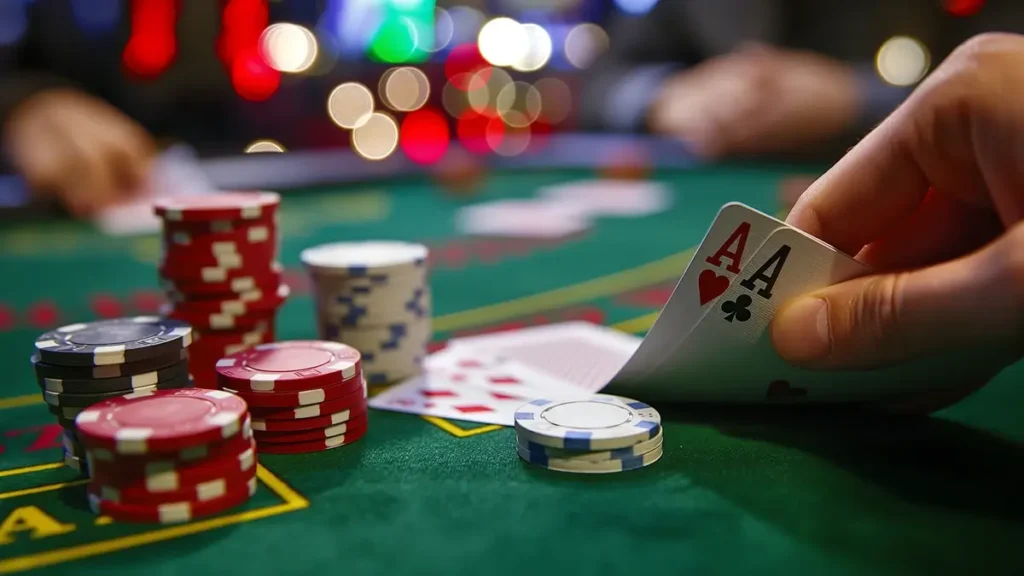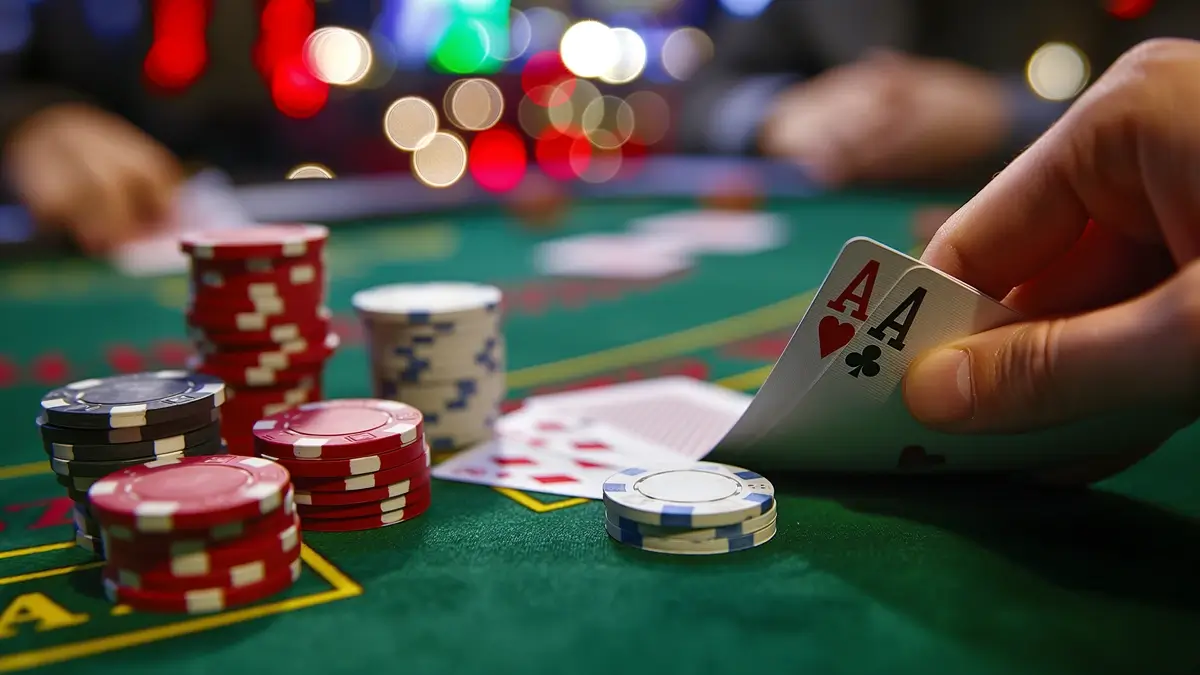Many Decks Are Used in Blackjack – Blackjack is one of the most popular and exciting casino games, and its simplicity and low house edge make it a favorite among many players. One of the factors that can significantly impact the game’s outcome is the number of decks used in the game.
Understanding how many decks are used in Blackjack, and how this affects both your strategy and the odds, can give you a significant advantage. In this guide, we’ll explore how the number of decks impacts gameplay, how to adjust your strategy accordingly, and why casinos choose to use multiple decks in Blackjack.
Many Decks Are Used in Blackjack

1. How Many Decks Are Used in Blackjack?
The number of decks used in Blackjack can vary depending on the casino and the specific rules of the table. Traditionally, Blackjack was played with a single deck of 52 cards, but today, most casinos use multiple decks to speed up the game and make card counting more difficult. Here’s an overview of the most common deck configurations:
Single Deck Blackjack:
- 1 Deck of 52 cards.
- Single deck Blackjack is often favored by players who are skilled at card counting, as it is easier to track the ratio of high to low cards when fewer decks are in use.
- It offers the most favorable odds for players, as the house edge is lower (about 0.17% if optimal strategy is used).
Multi-Deck Blackjack:
- 2 to 8 Decks of cards.
- The most common version of Blackjack in casinos today is multi-deck Blackjack, where 6 or 8 decks are typically used.
- The more decks in play, the higher the house edge. For example, in 6-deck Blackjack, the house edge increases to about 0.64%, and in 8-deck Blackjack, it can rise slightly higher.
Why Multiple Decks?
- Faster Gameplay: Casinos use multiple decks to speed up the game. Shuffling one deck after each hand would take longer, so using several decks reduces downtime and keeps the game flowing.
- Prevents Card Counting: Multi-deck games make card counting much more difficult. The more decks in play, the harder it is for players to track the remaining cards and calculate their advantage.
2. How Does the Number of Decks Affect the Odds?
The number of decks in use can have a significant effect on the odds and strategies in Blackjack. Let’s explore how the number of decks impacts both the house edge and your chances of winning:
House Edge:
- Single Deck Blackjack: In a game where only one deck is used, the house edge is typically the lowest because players can more accurately predict the remaining cards, and the odds are more favorable for the player. The house edge in single-deck Blackjack can be as low as 0.17% when optimal strategy is employed.
- Multi-Deck Blackjack: As the number of decks increases, the house edge also increases, though the increase is relatively small. In 6-deck Blackjack, the house edge rises to about 0.64%, and in 8-deck Blackjack, it increases slightly to around 0.65%. This slight rise happens because it becomes harder to predict card outcomes as more decks are shuffled together.
Card Counting:
- Single Deck: With a single deck, card counting is much easier. Players can keep track of the cards already dealt and calculate the remaining high cards versus low cards, which gives them an edge.
- Multiple Decks: In multi-deck games, tracking cards becomes much more difficult, as there are more cards in play. Even though card counting techniques can still be applied, the advantage gained from counting is much smaller in games with 6 or more decks.
Natural Blackjack:
- Single Deck: The chance of hitting a natural Blackjack (an Ace and a 10-value card) is slightly higher in a single-deck game because there are fewer cards remaining in the deck, meaning that the ratio of 10-value cards to other cards is more favorable.
- Multi-Deck: In multi-deck games, the chance of drawing a natural Blackjack is slightly lower because the odds are diluted across more cards. However, this difference is minimal when compared to the overall changes in house edge.
3. Best Strategy for Different Deck Counts
Understanding the number of decks in play can help you adjust your Blackjack strategy to minimize the house edge and maximize your chances of winning. Here’s how to modify your approach depending on the deck count:
Single Deck Blackjack:
- More Accurate Card Counting: If you’re playing single-deck Blackjack, it’s much easier to apply card counting strategies, as you can keep track of the cards more effectively.
- Slightly Looser Betting: In a single-deck game, since the odds are in your favor, you can afford to be more aggressive with your betting when the count is in your favor.
- Hit on Soft 17: In single-deck Blackjack, some casinos allow the dealer to stand on soft 17 (a hand containing an Ace valued as 11 and a 6, such as Ace-6). If this is the case, always play basic strategy to take advantage of the favorable odds.
Multi-Deck Blackjack:
- Adjust Betting Strategy: In multi-deck games, you may need to be more conservative with your betting, especially if you’re relying on card counting. Focus on finding the right balance between staying in the game and making profitable bets.
- Stick to Basic Strategy: Since card counting becomes much more challenging with multiple decks, focusing on basic strategy is key. Stick to the strategy chart, adjusting based on your hand and the dealer’s upcard.
- Avoid Insurance Bets: In multi-deck Blackjack, it’s generally not advisable to take the insurance bet (a side bet that the dealer has a blackjack). The odds of the dealer having a blackjack decrease as the number of decks increases.
4. Deck Penetration in Multi-Deck Games
One additional factor to consider when playing multi-deck Blackjack is deck penetration, which refers to how much of the deck is dealt before it is reshuffled. Higher deck penetration means you have more information about the remaining cards, which can help you refine your strategy.
- Deep Penetration: If the dealer goes deep into the deck (e.g., over 75% of the deck is dealt), card counters can gain more of an edge, even in multi-deck games. Deep penetration allows for better predictions of the remaining high cards.
- Shallow Penetration: If the casino reshuffles after a small portion of the deck is dealt, the ability to gain an advantage is diminished, and your strategy should rely solely on basic Blackjack tactics.
5. Which Deck Configuration Is Best for You?
Ultimately, the number of decks in play should guide your approach to Blackjack, but your choice of deck configuration will depend on your playing style:
- For Beginners: If you’re new to Blackjack, it’s best to start with multi-deck games, as they generally offer less risk and simpler strategy. Stick to basic strategy and avoid the complexities of card counting.
- For Experienced Players: If you are comfortable with card counting and are looking for the best odds, single-deck Blackjack is ideal. The house edge is lower, and you can track the cards more easily, giving you a significant advantage if you use advanced techniques.
- For Casual Players: For players who are in it for the entertainment value, multi-deck Blackjack games are widely available and offer a fun, fast-paced environment with a slightly higher house edge.
Conclusion
Understanding how many decks are used in Blackjack is key to improving your strategy and maximizing your chances of winning. While single-deck games offer the best odds and are ideal for card counters, multi-deck Blackjack remains the most common form found in most casinos. By adjusting your strategy based on the number of decks, and focusing on basic strategy when necessary, you can ensure a more favorable experience at the Blackjack table.


